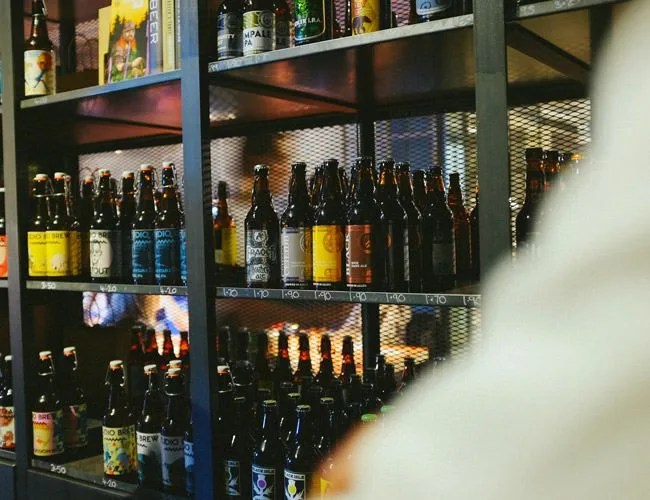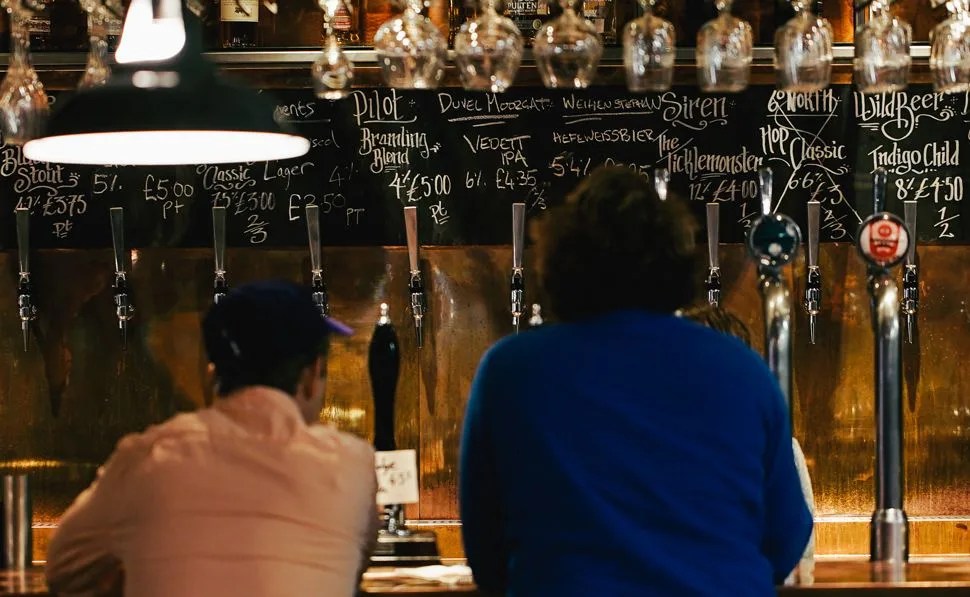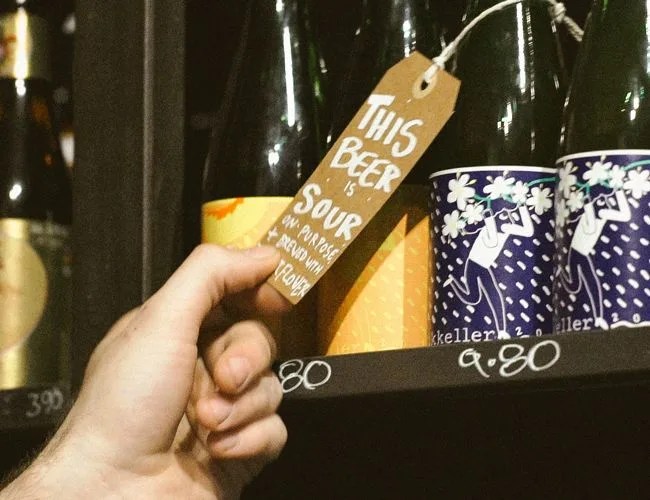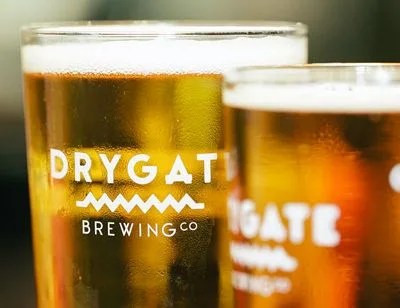On the far outskirts of Glasgow, just down the road from the city Necropolis and in the hulking shadow of Wellpark Brewery, where Scotland’s beloved Tennent’s lager is made, DryGate brewery sits in a building that looks a disused garage. It used to be one, in fact.
“The building we’re in just now was owned by our Tennent’s”, Drygate’s manager, Sean Brown, says from behind the bar. Now, as DryGate — which is owned in part by Tennent’s parent company, the C&C group, and partly by Scottish craft brewer Scott Williams of Williams Brothers Brewing — the space wide open, all clean new gray concrete and paint. A long shiny bronze bar is topped by a chalkboard where the names of beers from around the world sprawl in curly handwriting. One end of the floor is a big glass wall that looks into the brewing floor, where enormous steel tanks squat and puddles of malt-infused water glisten; off to one side sits a miniature version of the equipment, called a “studio kit”, used for brewing small test batches. “Initially”, Brown says, “they used to use it to make cardboard boxes. Then they used it basically as a big garage, and they kept all the odds and ends and machinery and stuff they didn’t need anymore.” As Brown talks to us a piece of machinery in the brewery — something big and powerful — switches on and the air of the brewpub is filled with a violent, clanging roar. It’s sure as hell a brewery now.

We’re here in search of Scottish craft beer, a relative question mark: It’s usually ignored or forgotten in the mad rush for a good single malt whisky. We know that exists thanks to several big-name breweries with distribution in America. One would imagine the stuff would be good, in a country with world-class barley and water that abuts England, today a craft beer giant. But so far the search has been tough sledding.
In Glasgow, even the nicer bars and restaurants serve blander macro, or mass-produced, lagers (like Tennent’s) and ales on tap, with a focus on “real ales”, which we call cask ales in the States. (If you don’t like cask, it’s like drinking a wounded soldier left out from the party the night before.) Some bars have a few craft bottles in a small fridge behind the bar. But the craft beer we’ve sought has been, like DryGate’s building, hidden in the shadow of macro suds. That means no dry-hopped pilsners. No wheat beers murky like turbid limestone creek water. No stouts with notes of chocolate truffle and Guatemalan coffee beans. And absolutely zero double IPAs — so few grapefruit, pineapple and mango notes that it seems we should be suffering from scurvy by now.



